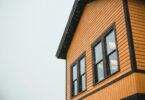Any homeowner knows mold is a dangerous problem that may ruin a home’s value and lead to numerous repairs. However, knowing where to look for mold decreases the chances of irreversible damage and removes it more easily. Read on to learn about the common places to find mold in your home so that you can watch for discoloration and growth in the infrastructure.
Bathrooms
The bathroom is a place of moisture, given the tub, shower, and sink. Mold often spreads in bathrooms due to the moisture build-up that follows steamy showers and the hot water running through the pipes and emitting heat.
Look under your bathroom sink, and you may find some greenish spots of mold on the pipes or on the sides of the cabinet surrounding the pipe. It’s crucial to remove this mold before it damages the wood or leads to a corroded pipe, which could release warm water and strengthen the mold’s spread.
Meanwhile, black mold is common on the ceiling of the shower since the surface experiences steam often. The rapid heating and cooling after the shower results in a build-up of moisture, leading to mold. The ceiling may degrade, and paint may chip if the problem persists, making mold removal important.
Kitchens
The kitchen is a probable location for mold, thanks to the saturated environment and the numerous foods that could spoil in the room. Mold occurs in produce left out for too long or bread that retains too much moisture in its container. Ensuring proper food storage mitigates the issue and preserves food longer.
As with the bathroom, the kitchen can experience mold development issues around the sink pipes. Inspect this area often to avoid unnoticed growth becoming too much to handle yourself. Storing items under the sink may cause this growth to hasten due to the stuffy enclosure retaining more moisture.
Roofs
Few homeowners inspect the roof thoroughly, but the roof is just as important to focus on as other areas of the home. There are many common roof issues you shouldn’t ignore, such as water damage that could lead to mold growth. Storms and precipitation encourage mold growth, especially in the muggy summer air.
The gutters retain more moisture when they’re clogged, and organic material may begin to mold. Cleaning gutters is an essential part of ensuring mold stays off the top of your home. Clean the shingles and inspect your roof so that you can tackle any mold before it becomes a significant problem. Rooms within the home are manageable problems, but a deteriorating roof is another beast entirely, so you’ll need professional help to address it.
Your home should be a place where you control what you grow. Look into these common places to find mold in your home so that you can defend your property from the effects of mold.








